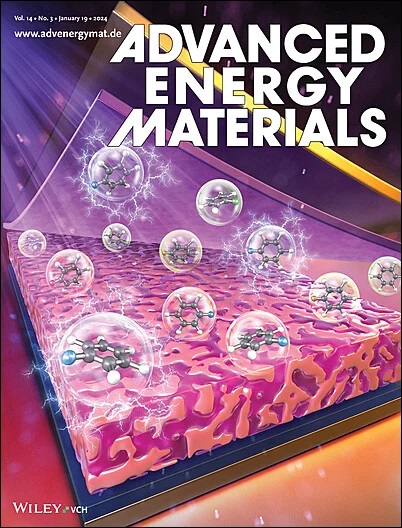Enhancing Perovskite Solar Cell Durability via Strategic Cation Management in Chalcogenide‐Based Hole Transport Layer
IF 24.4
1区 材料科学
Q1 CHEMISTRY, PHYSICAL
引用次数: 0
Abstract
Copper‐chalcogenide‐based inorganic holetransport layers (HTLs) are widely studied in perovskite solar cells (PSCs) because of their favorable valence band maximum and their ability to passivate interfacial defects through Pb‐S interactions. These compounds are shown to produce stable PSCs because of their high intrinsic stability. However, the density functional theory (DFT) calculations and X‐ray photoelectron spectroscopy analysis presented here reveal that the presence of Cu in the HTL can weaken the interfacial Pb‐S interactions and compromise the device stability. A clear inverse relationship is observed between the stability of perovskite film and the Cu‐concentration in the HTL underneath. Therefore, to minimize the detrimental effect of Cu, this work explores Cu‐deficient chalcopyrite compounds, CuIn求助全文
约1分钟内获得全文
求助全文
来源期刊

Advanced Energy Materials
CHEMISTRY, PHYSICAL-ENERGY & FUELS
CiteScore
41.90
自引率
4.00%
发文量
889
审稿时长
1.4 months
期刊介绍:
Established in 2011, Advanced Energy Materials is an international, interdisciplinary, English-language journal that focuses on materials used in energy harvesting, conversion, and storage. It is regarded as a top-quality journal alongside Advanced Materials, Advanced Functional Materials, and Small.
With a 2022 Impact Factor of 27.8, Advanced Energy Materials is considered a prime source for the best energy-related research. The journal covers a wide range of topics in energy-related research, including organic and inorganic photovoltaics, batteries and supercapacitors, fuel cells, hydrogen generation and storage, thermoelectrics, water splitting and photocatalysis, solar fuels and thermosolar power, magnetocalorics, and piezoelectronics.
The readership of Advanced Energy Materials includes materials scientists, chemists, physicists, and engineers in both academia and industry. The journal is indexed in various databases and collections, such as Advanced Technologies & Aerospace Database, FIZ Karlsruhe, INSPEC (IET), Science Citation Index Expanded, Technology Collection, and Web of Science, among others.
 求助内容:
求助内容: 应助结果提醒方式:
应助结果提醒方式:


